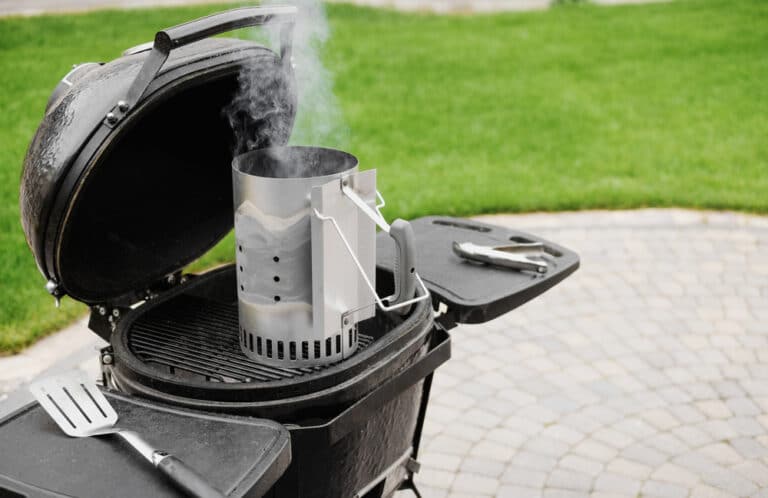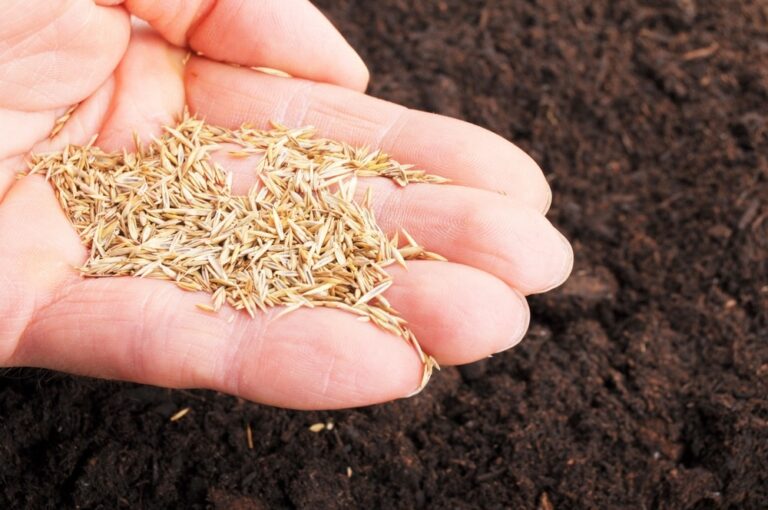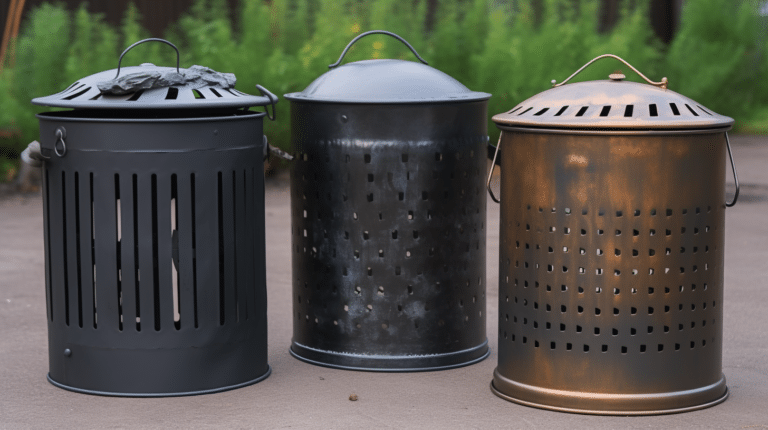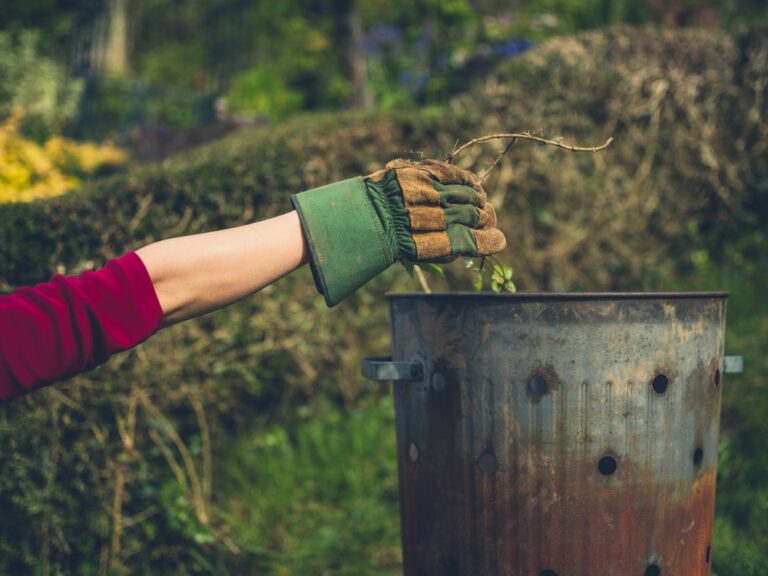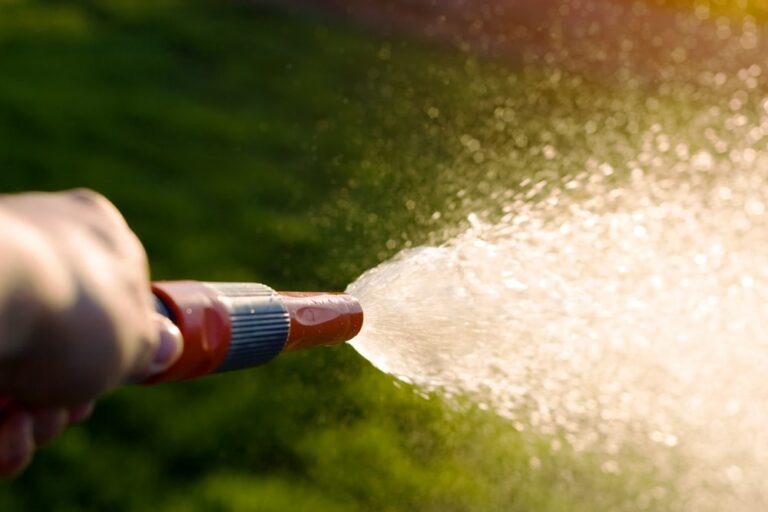Tired of pesky weeds overpowering your garden? Then you’re in the right place because we have all the insight and tips you need on how to clear a garden full of weeds. Created to make your life a little easier, today’s article takes on some natural and effective ways to kiss goodbye to weeds while also taking a look at the reasons you need to remove them in the first place. Continue reading to discover all you need to know about weeds.
How to Clear a Garden Full of Weeds
If you have an overgrown garden with intense weed growth, below are some effective ways you can stop weed seeds from growing and kill weeds.
Block Out Sunlight
Weeds need sunlight in order to grow, so one way to control weeds is by blocking out sunlight. This is a great procedure for preventing garden weeds in the first place while also helping with weed control and maintenance.
Mulch helps to keep your soil moist while blocking out sunlight, which is the ideal scenario for helping to prevent weeds. You can purchase an organic mulch to help combat growth, but this type of mulch doesn’t work best at preventing sunlight from coming in, which can still leave many weeds alive and growing. Alternatively, an inorganic kind might be a wiser choice since this limits moisture loss and protects your soil.
If you want to remove weeds from all over your garden and they’re pretty much taken over your backyard, you might want to choose plastic mulching. Simply spread this film in your garden to act as an effective weed killer from day one.
Additionally, cultivation exposes garden soil, which gives pesky weeds access to sunlight, enabling them to grow. By covering up the soil in your garden bed, you would damage the ground while preventing weed germination.
Manually Pull the Weeds Out
Another effective (and common) way to remove weeds is by pulling them out with your hands. While pulling weeds, you want to be careful that you wear waterproof gloves to protect your hands while gardening. Furthermore, resist the temptation of reaching into the soil and tugging on the weeds, as this might get you into a worse situation. In particular, tugging at the heads of the weeds can break the plant, leaving the roots remaining in the soil so that they can germinate again.
Instead, a better approach is to hold the plant at the lower end and pull it to release the entire weed from the ground. Although your grade might look prettier without weed heads scattered around everywhere, it’s important that you grab the deep roots to prevent them from returning. Cutting off the weeds’ heads will help to prevent them from receiving sunlight, but it won’t stop the root buds from remaining in the ground.
Use a Weeding Tool

Weeding tools are effective garden equipment for removing deep-rooted weeds from your garden. They also make de-weeding much easier since you don’t have to reach your hand in the soil and remove the weeds yourself.
Ensure that you spend some time purchasing the right garden tool for your height and needs. Many come with an adjustable height that allows you to make alterations based on whether you’re seated or standing. Plus, you can share the weeding tool with other people. For the best results, a long-handled tool is best because this gives you the versatility of removing all the weeds from your lawn without having to bend down and potentially injure your back.
Use a Weed Torch
A weed torch is also an effective device for killing weeds in your garden—without having to use any nasty chemicals or herbicides. Including a small prone gas tank, these tools create a hot flame that literally kills common weeds. The second that the torch makes contact with the weeds, it dehydrates the plants, causing them to die. For safety precautions, we recommend using a weed torch on green weeds, as burning brown weeds can increase the chances of a fire. You may also need to check with your local authority that you’re allowed to use this tool in your community.
Use a Bottled Weed Killer
If all else fails, weed killers are an effective solution to overgrown weeds. These products come in a range of options, and below is how to choose the right weed killer for you.
Selective
A selective weed killer only kills select weeds and not the surrounding plants, meaning that you don’t have to cover crops or worry about your flower bed. Consider a product that’s a combination of lawn feed and weed killer to help you plant flowers while keeping annual weeds at bay.
Residual
For a stronger weed killer, consider a residual type. This is fast acting but, while it stops weeds from growing, it kills everything, including soil and plants. So you won’t be able to grow plants in your garden for months after using this product. It also requires only directing the solution to weeds to keep the rest of your garden blossoming. But it’s not all bad because a residual weed killer is ideal for cleaning weeds in your paving or decking where there are no other plants present.
Contact
Affecting only the plants that it makes contact with, a contact weed killer won’t affect your lawn’s soil condition, enabling you to plant flowers in the lawn shortly after. However, this type of herbicide requires application at certain times of the day, so you’ll need to be on your game to ensure that it’s an effective weed eater.
Non-Selective
Another way to eliminate weeds is by using a non-selective herbicide. This product kills any plant that it makes contact with, which includes grass and flowers as well as weeds. Therefore, you need to apply the weed killer liberally and, ideally, ensure that you only use it in specific areas rather than the whole garden.
Systemic
Tackle weeds with a systemic product that zaps every element of weed. As a result, it spreads right down to the weeds’ roots, ensuring that it kills all garden weeds effectively.
Some Unusual (and Natural) Ways to Kill Weeds
If you’re looking for a more natural way to remove a garden full of weeds, below are some unusual tricks that are effective and minimize soil disruption.
Boiling Water
If you pour leftover boiling water from the kettle down the drain, you could put it to good use by applying the water to your garden to help with weed control. Once the water makes contact with the weeds, they’ll burn up, preventing you from having to use any chemicals or from using a digging fork to remove the weeds.
Soap
Due to the natural oil in soap, it can help to break down weeds. Add a couple of drops of washing-up liquid to vinegar and pour the solution into a bottle. Then, apply this solution to the affected areas in your garden. Not only is soap effective at killing weeds, but it also helps to guide you when gardening by making the weeds’ leaves shiny, so you can keep track of the areas that you’ve sprayed.
Vodka
If you have some spare vodka lying around in your home, consider using it to help with weed growth. Mix 30ml of vodka with 500ml of water and add a couple of droplets of washing-up liquid. Mix together the solution to combine all of the ingredients and apply it to a spritz bottle. Then, target the unwanted plants in your garden. This works best for maintenance rather than killing fully overgrown weeds. It also protects the rest of the plants in your garden.
Vinegar
Vinegar is a natural ingredient that will eliminate weeds in their tracks. Ensure that you cover flowers in your garden that you don’t want to be affected before spraying vinegar onto the weeds because vinegar can be destructive to all plants. In fact, we recommend using a bottle with a nozzle that allows you to direct the solution to specific areas.
When Is the Best Time to Use a Weed Killer?
If you’ve made the decision to clear weeds using a herbicide, you’ll need to be informed of the best times and scenarios to use these products. The good news is that you can use them at any time of the year, but the best time to use a weed killer is during early spring or autumn when the weeds are typically growing at their strongest, which enables them to absorb the solution quicker.
Additionally, apply the solution in calmer weather (when it’s not been raining or is windy) to prevent these dangerous chemicals from leaking onto your lawn or killing other plants. It’s also important where you target the weed, which will help you to choose the right weed killer for the scenario from the above options. We also recommend waiting at least 24 hours before you plant flowers in your garden to prevent killing them.
Accessories for Killing a Garden Full of Weeds
When attempting to kill a garden full of weeds, you’ll need some additional accessories and equipment for the best, safest results. Below are some must-haves to add to your gardening arsenal.
Safety Eyewear
Most importantly, ensure that you protect your eyes when gardening with safety goggles. Weed killers are packed with chemicals that can be toxic, and if these chemicals come into contact with your eyes, you can suffer some serious consequences. Prevent any implications from arising by always protecting your eyes.
Specific Nozzles
If you choose to kill weeds in your garden with a herbicide, you may want to purchase an additional nozzle that allows you to cover a specific area with precision—especially if the weeds have plants closer than you’d like. On the other hand, you might require a nozzle that covers a larger surface area in minimal time to reduce how long it takes to cover your entire garden.
Paving Knife
Reaching weeds on pavements can be difficult, which is why a paving knife is a must-have gardening accessory for targeting these hard-to-reach areas. Thanks to the thin head of paving knives, they’re designed to reach into every nook and cranny and not leave any remains of weeds.
Reasons to Remove Weeds From Your Backyard
What are the reasons to eliminate weeds from your garden in the first place? Aside from looking undesirable, there are several other factors that mean you’ll want to kill weeds as soon as you notice them.
They Block Out Light
We all know that plants need sunlight to grow, but a garden filled with weeds discourages flowers from having enough sunlight, which can impact their growth.
They Steal Water
Another important factor for healthy plant growth is sufficient water. But if you have an abundance of weeds in your backyard, they’ll steal water, too, leaving an insufficient amount of water left for the plants you want to see.
Crowd Soil Space
Plants need plenty of soil room to grow, but if most of your garden is taken up with weeds, your wanted flowers won’t have enough surface area underneath for adequate growth.
How Do You Clear a Garden of Weeds?
For effective weed removal, we suggest removing a source of sunlight from these plants while investing in some good old fashioned weed pulling while wearing protective gloves. For those with weak hands, consider a weeding tool to assist you. If you have any tips to share on clearing weeds from a backyard, share them below.


